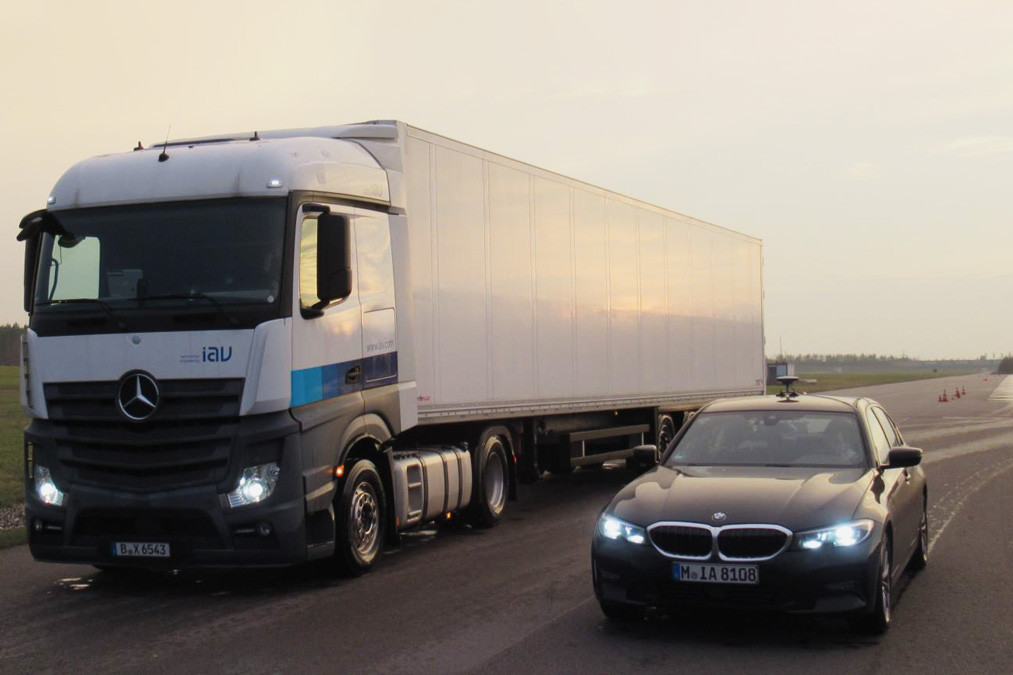
«We want highly automated commercial vehicles to be able to assess road conditions by themselves in the future.»
Dr. Hubertus Ulmer — Team Leader Commercial Vehicles eMobility
As part of a research project put out to tender by the Federal Highway Research Institute (BASt) (FE 82.0722/2018), TU Berlin and IAV, which the former involved in the execution of the contract, spent two years developing the technical basis for a new driver assistance system.
Friction value decisive for driving safety
This makes it possible to evaluate the transmissible force between the tire and the road surface during operation on the road and to warn the driver of a reduced coefficient of friction. Further developed and adapted to the application, this method could be used in highly automated vehicles.
The special thing about this method is that it uses existing indicators such as outside temperature sensors and rain sensors and does not require any other sensors. Only weather data is brought into the vehicle via a data connection and evaluated by using new software.
The extensive tests of braking maneuvers in a wide variety of weather conditions and on different road surfaces focused on the "coefficient of friction" resulting from the interaction between tires and road surface and the question of how well the forces between tires and road can be transferred, i.e. how effectively a 40-tonne truck can be braked.
Database with over 8,000 car-braking maneuvers
To this end, experts from IAV and TU Berlin built up a database with dozens of parameters for every braking process recorded. In particular, the braking deceleration in the longitudinal direction of the truck was measured - the data and findings from over 8,000 comparable full decelerations with passenger cars were also used.
"One thing is clear: there is a method for reliably evaluating the coefficient of friction for trucks," says Dr. Gerd Mueller, senior engineer at the Department of Motor Vehicles at TU Berlin. "Models that have been developed for passenger cars at our department in recent years can easily be transferred to trucks."
«During the research project's validation drives, the method proved to be robust and fully functional.»
Dr. Gerd Müller — Senior engineer at the Department of Motor Vehicles at TU Berlin
Based on the joint development project, IAV has equipped the test vehicle with measurement data technology, carried out the test drives and evaluated the measurement data.
On 8/9 November, IAV will present the project at the VDI symposium "Tires – Chassis – Roadway" in Karlsruhe.